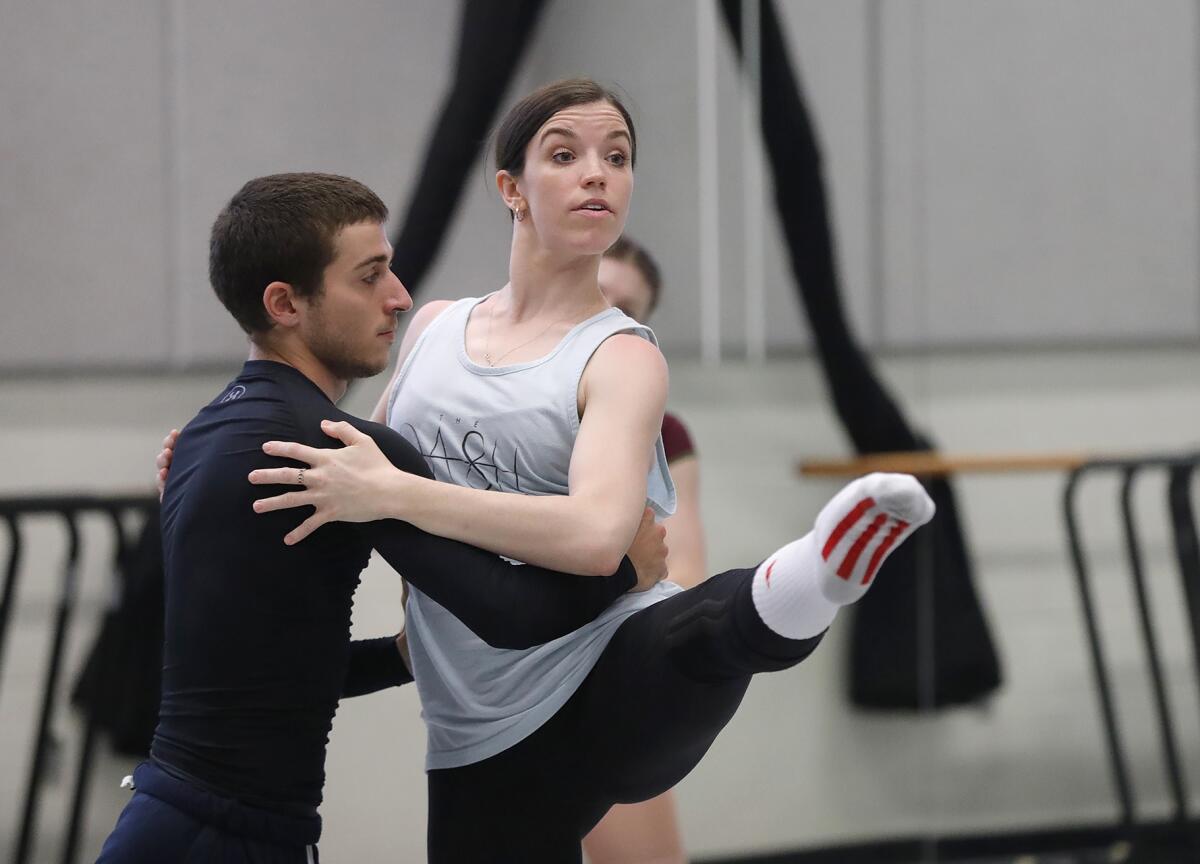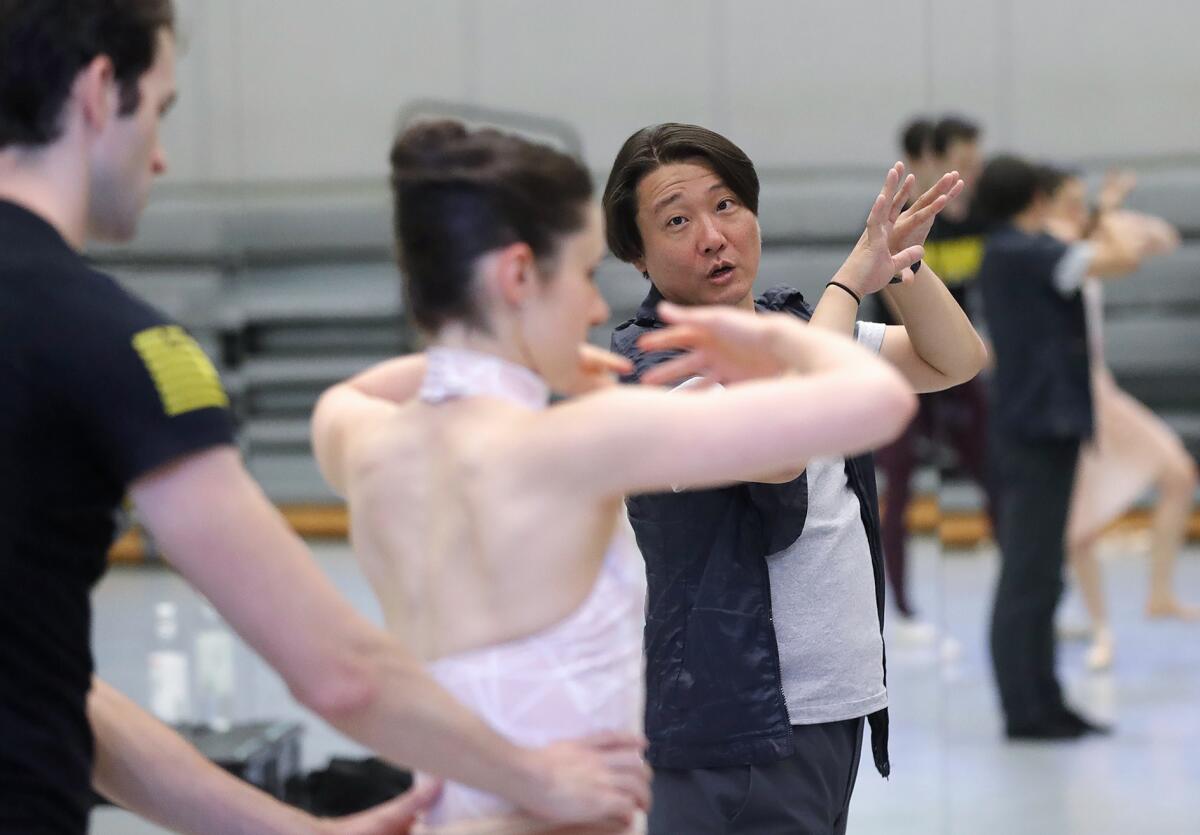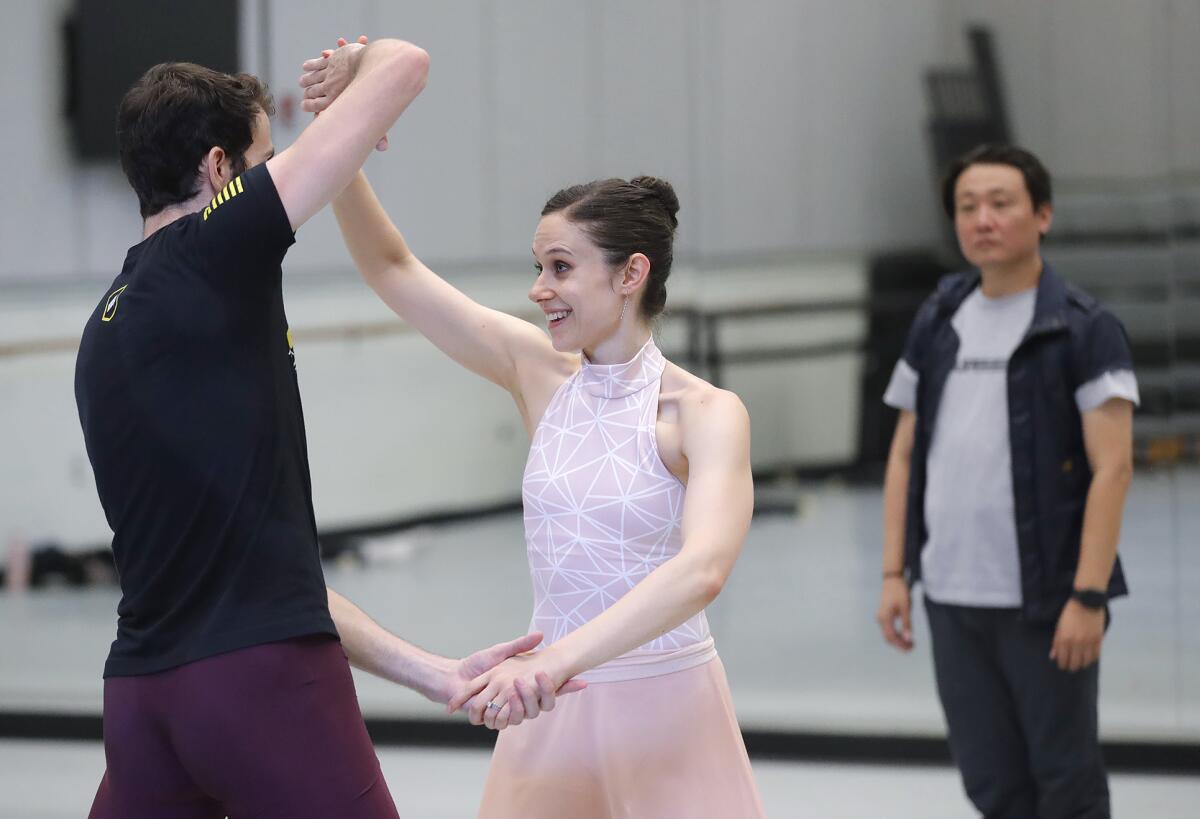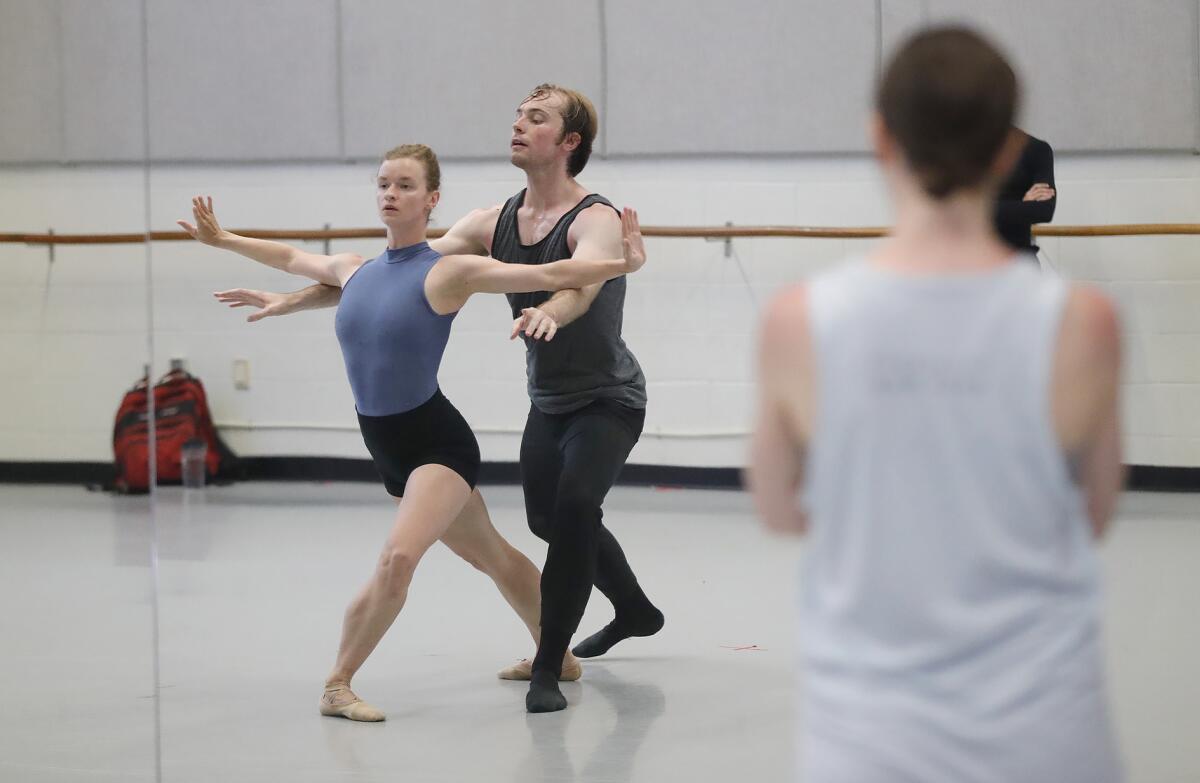National Choreographers Initiative at Irvine Barclay Theater pushes the art forward

Less than a week remains before showtime for a small contingent of choreographers and dancers who have been practicing nearly every day at the William J. Gillespie Performance Studios at UC Irvine as part of the National Choreographers Initiative — a program Molly Lynch has helmed since 2004.
The program, which invites four choreographers and 16 dancers annually, started as an idea incubator for choreographers working in ballet to develop new work without having to face the pressure of an imminent premiere.
Lynch, a professor of dance at the university who served as the artistic director for Ballet Pacifica from 1988 to 2003, said she was working with South Coast Repertory at the time and that the company had something that they called “NewSCRipts.”
“It’s a play reading,” Lynch said. “When a play is in processing and development, their scripts can be read on stage and the audience can hear it without it being fully produced, and give comments. I thought, ‘Well, why can’t we have something like this with dance as well where it’s more of a developmental process rather than having to do a premiere?’
“That’s where the concept started. The idea was to bring together choreographers and dancers because for playwrights, they can sit down with a pen, but choreographers need to be in the studio. They can put their concepts and ideas together outside of it, but they need to be in a studio with dancers.”
Kristopher Estes-Brown, Ye Li, Ian Schwaner and Carrie Ruth Trumbo are the choreographers participating in the program this year.
Choreographers and dancers must apply for acceptance to the program. Participating dancers often have a background in ballet as a baseline, but choreographers are not limited to pieces with classical ballet.
The program runs for about three weeks, but neither choreographer nor dancer are expected to come out with fully completed pieces. Many never see completion but are instead used as a launching point for other choreographed works later on.
“I don’t really ask them for submitting [what they plan on working on] because I don’t want them to feel like they’re committed to doing a specific thing before they come,” said Lynch. “I want them to come in with the idea of an open mind and an open studio and let themselves be free to be able to create something that maybe isn’t always something that they’ve done before.”
Lynch estimates 69 choreographers have passed through NCI and produced 72 new works with more than 30 of them going on to see completion or premiering with dance companies across the country and internationally.

Trumbo and Li said in a recent interview that one of the biggest differences while participating in the program is having the opportunity to work with dancers they weren’t already familiar with in the studio.
“I’m really experimenting with group dances that involve more couples. I have four couples in my piece to start off, and I don’t normally have the luxury to do that, to be honest,” Trumbo said. “I don’t usually have that many male dancers, and I’m really enjoying seeing what’s possible there and exploring sort of a group pas de deux,” a dance for two, typically a man and a woman. “We just have so many capable dancers here. It’s really fun to push the boundaries of that.”
Trumbo said she recently came off of working on a narrative piece and that she’s largely focused on making movement that interests her, but she noticed the story was beginning to shape itself around that same work.
“[Dance] is art that is created with other people, and it’s a necessity. You really do need people to get started. You have to get going with people in the space, but to get that opportunity with no experience … it makes a cyclical pattern where it’s hard to break into [the industry] because of that,” she said. “So, what’s so special about this [program] is there really aren’t a lot of these incubators in existence.”

Li agreed, adding that he typically built his dances around his dancers, but those he was working with over the past two weeks offered different opportunities. Choreographing the piece he will be showing was more experimental, he said, as he couldn’t fully structure the piece in his head until he met them and saw what their strengths and weaknesses were.
He laughed, noting that there is a point in his piece where the dancers will have pointe shoes on one foot and be barefoot on the other — things that he’s never done and wouldn’t consider risking if he were preparing for a full-fledged premiere.
“[Lynch] gave us total freedom to do things. You can do whatever you feel [is] right. Whatever you want. [It’s] really, really nice and all the dancers, because I knew all the dancers would be young dancers, they weren’t in a company for a long time. That makes it feel like they’re on fire,” Li said. “I feel that part’s really important. You really want to prove yourself because you don’t know anybody. I think the competition is everywhere.
“We’re not competing, but you’re in the studio and you’re thinking, ‘I’m the one; I’m the one.’ That kind of stuff really reminds me when I came into the studio the first day. It is a memory of when I was young and when I was at their age. That’s the part that drives me to continue, and I want to do something better.”

The culmination of their work will be presented at the Irvine Barclay Theater on Saturday, July 29. Tickets are available in-person and via live stream, with in-person tickets between $20 to $60 and virtual tickets at $20.
Interested readers can check for more information about the showcase or purchase tickets for either option at thebarclay.org.
“[This] helps move the art form forward. If you always redo the things that you know are going to work, then you’re not really progressing as much as you possibly can,” Lynch said. “Mid-career choreographers — they’ve been doing choreo for some time, but get stuck into repeating what they know works. I’m trying to help move the art form forward and for these choreographers to move their own practice and creative forward in a new way by giving them that freedom and succeed or fail.
“Being at the university, we talk a lot about research and labs — this is our lab. Our lab is the studio. It’s a place to be nurturing new work.”
All the latest on Orange County from Orange County.
Get our free TimesOC newsletter.
You may occasionally receive promotional content from the Daily Pilot.




